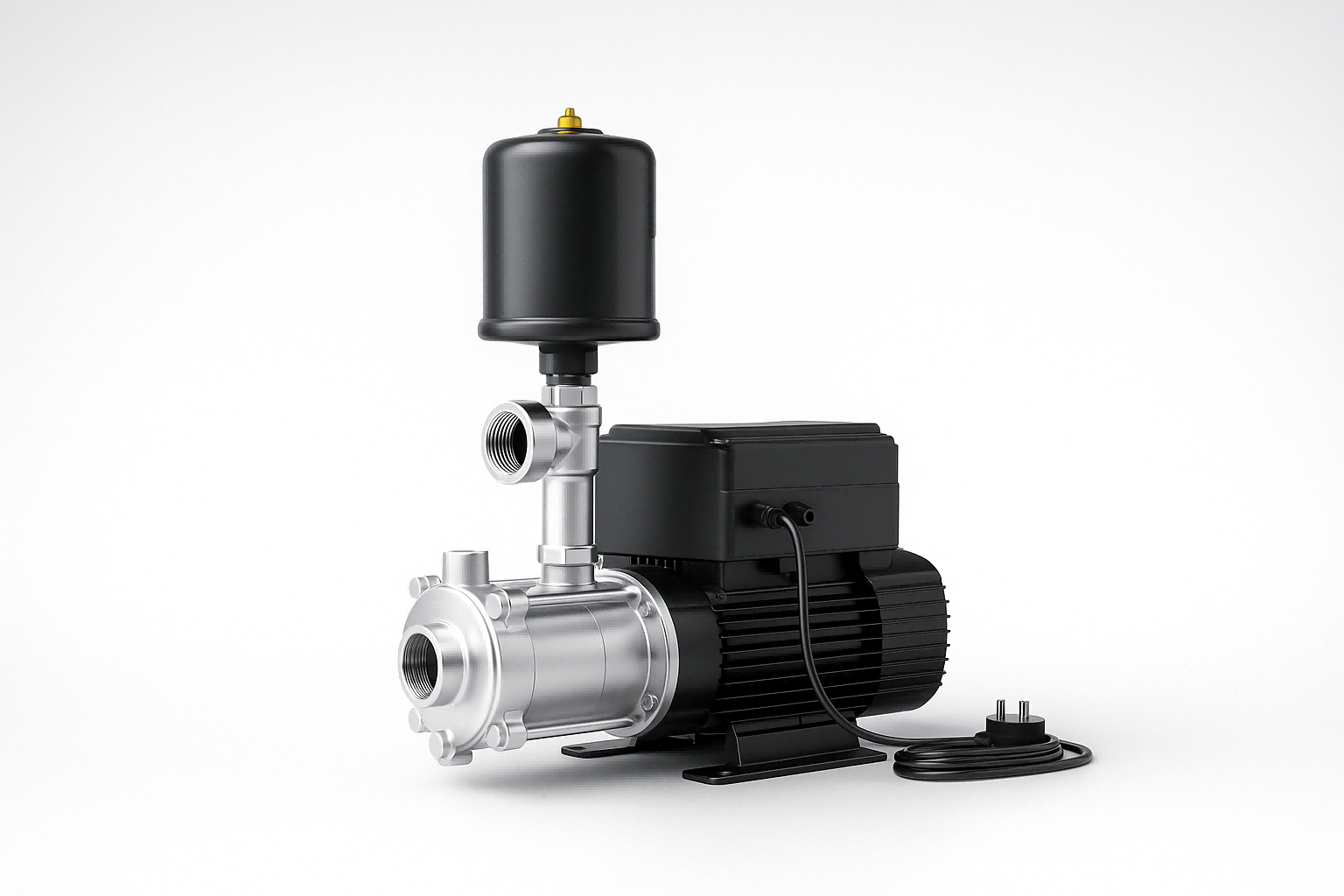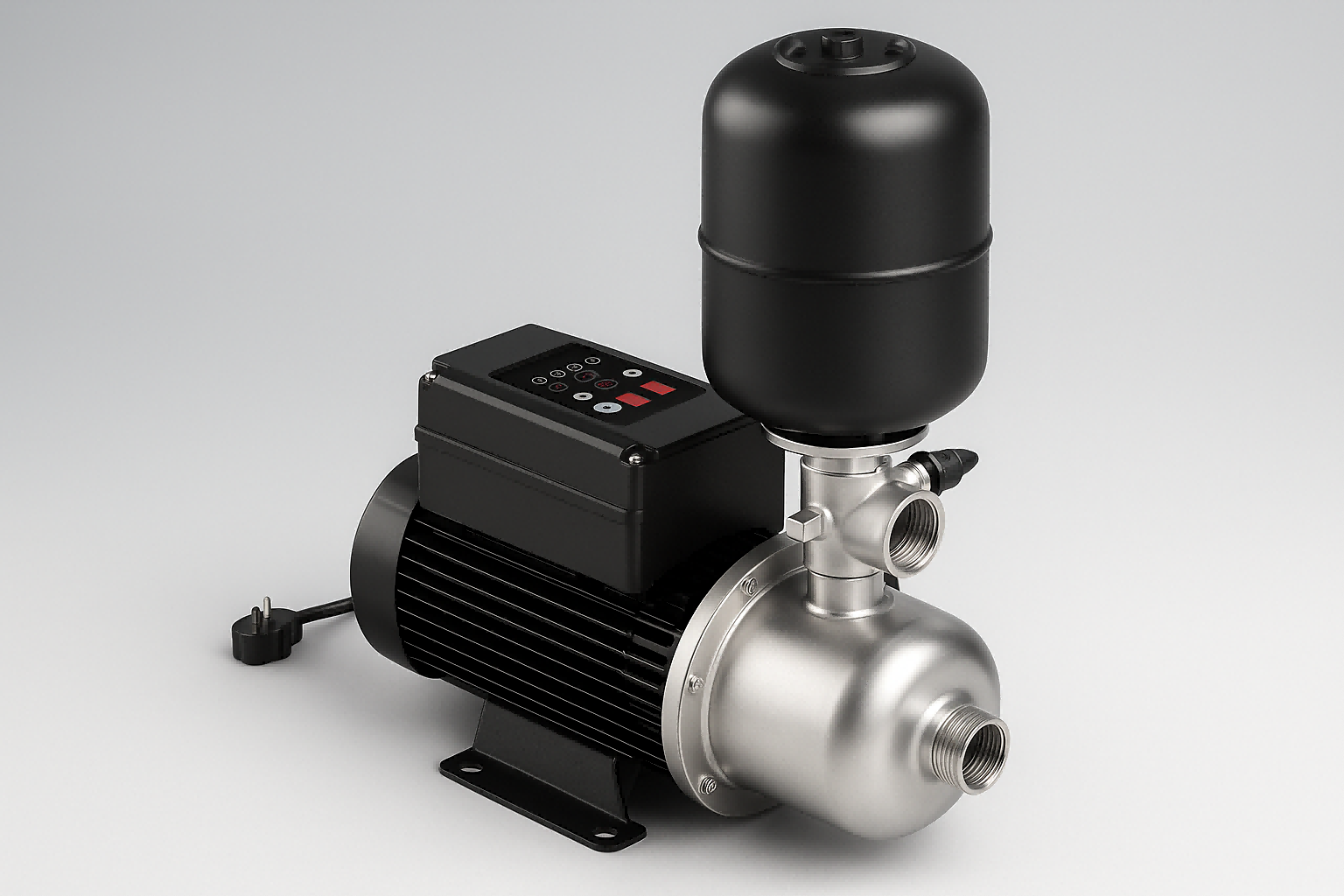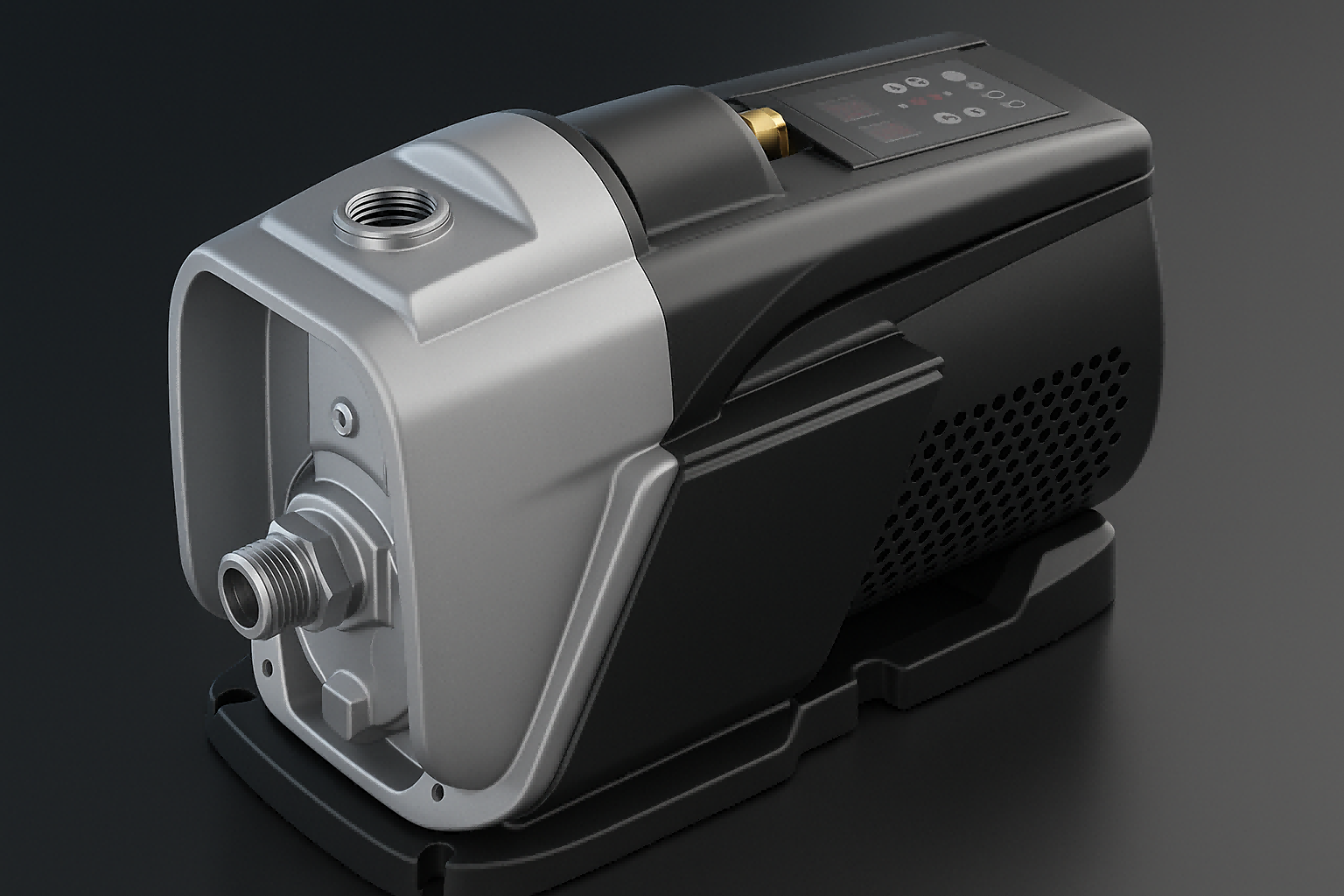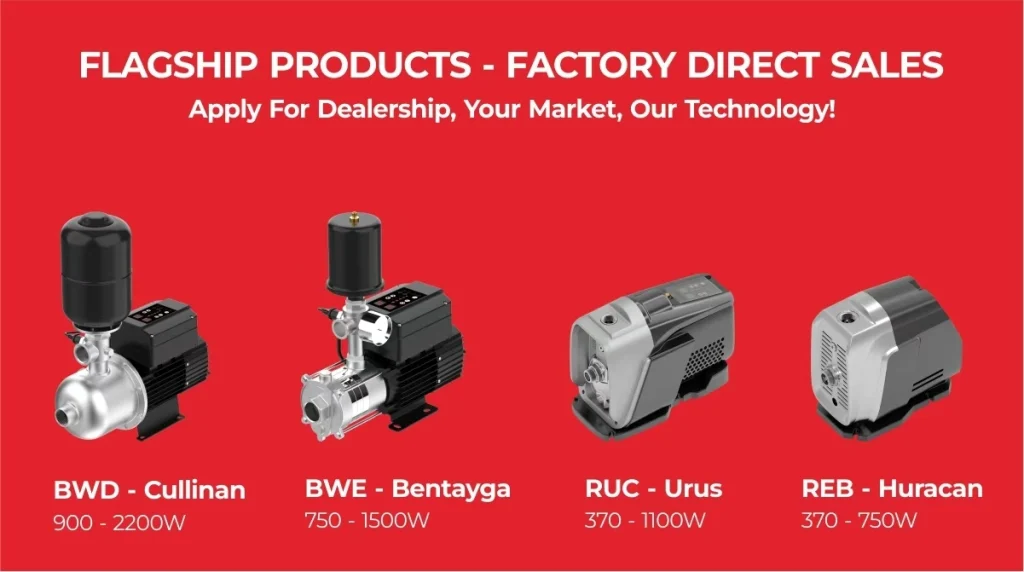Water pumps are essential, but their high energy costs can be a shock.
You need constant pressure, but your power bills keep climbing, forcing a tough choice between comfort and budget.
The main disadvantages of water pumps include high energy consumption, frequent noise and vibration, ongoing maintenance costs, and potential for inconsistent water pressure, especially with older, fixed-speed models.
These issues can lead to higher utility bills, disruptive operation, and costly repairs over the pump's lifespan.
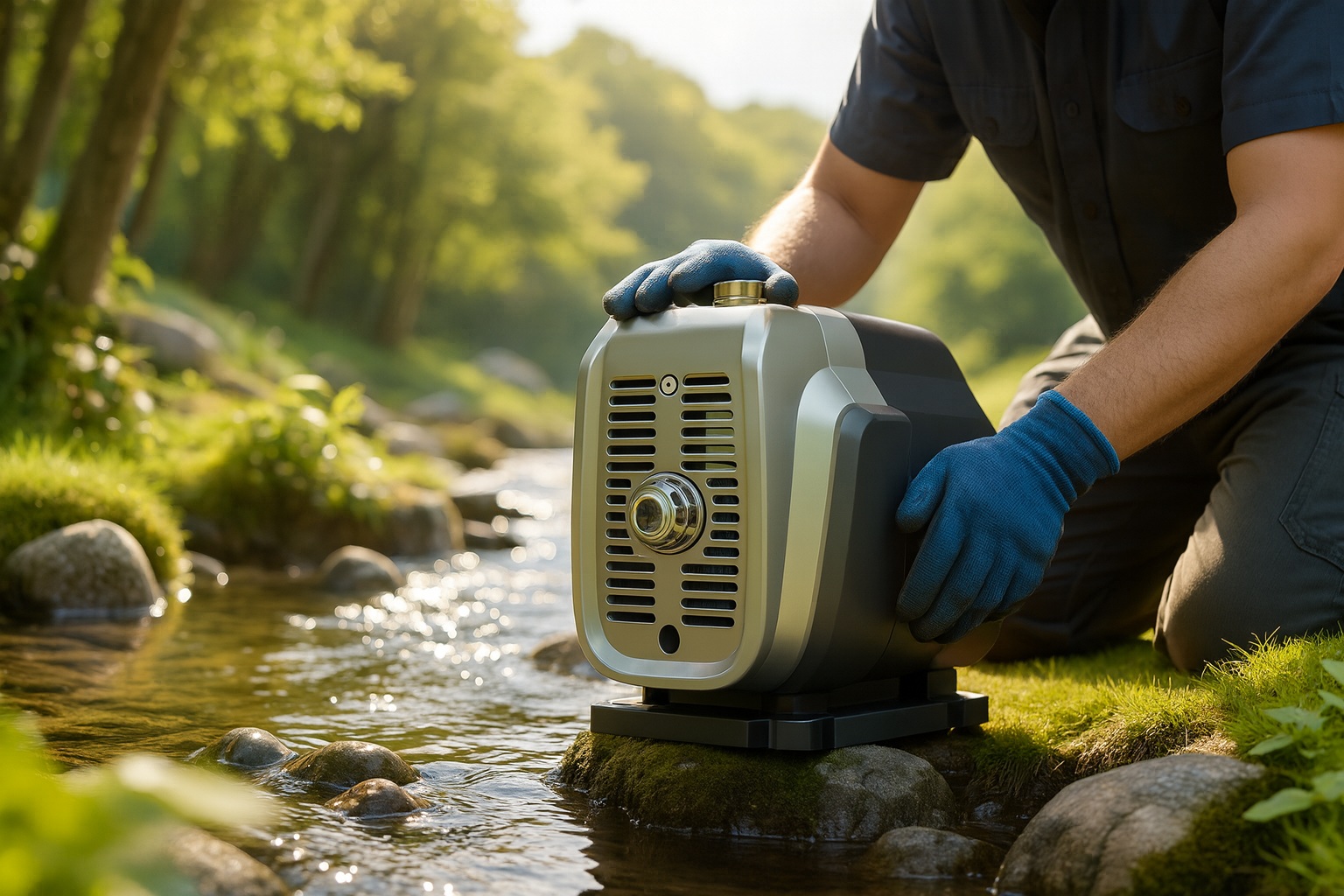
Water pumps are the heart of any water system, working silently behind the scenes.
But like any hardworking machine, they have their downsides.
Understanding these drawbacks is the first step toward finding a smarter, more efficient solution for your property.
Let's explore the common challenges pump owners face and how to overcome them.
A Major Drawback: High Energy Consumption
Struggling with high electricity bills from your water system?
Your water pump could be a hidden energy hog, constantly running at full power and inflating your operational costs.
Traditional water pumps are a primary source of high energy consumption because they often run at a fixed, maximum speed regardless of actual water demand.
This means they use the same amount of electricity to fill a small cup as they do to run a shower, leading to significant waste.
The constant hum of a water pump is more than just a sound.
It is the sound of your money being spent on electricity.
For many property owners and facility managers, the energy cost is one of the most significant and frustrating aspects of pump ownership.
This cost is not a one-time expense.
It is a continuous operational drain that accumulates over the life of the pump.
Most people underestimate just how much of their utility bill is dedicated to water pressurization.
Let's break down why this happens and what it truly means for your budget.
Why Do Conventional Pumps Use So Much Power?
The core of the problem lies in their design.
Most standard water pumps are fixed-speed, also known as "on/off" pumps.
They only know two states: off or running at 100% capacity.
This is incredibly inefficient.
Think of it like driving your car by only flooring the accelerator or slamming on the brakes, with no option to cruise at a steady speed.
This method wastes a tremendous amount of fuel, and the same principle applies to water pumps and electricity.
They run at peak power to meet the highest possible demand, even when the actual need is minimal.
The Hidden Costs Beyond the Price Tag
When you purchase a pump, the initial price is just the beginning of its total cost.
The Lifetime Cost of Ownership (LCO) tells the full story.
Energy consumption is by far the largest component of a pump's LCO.
It can account for over 85% of the total costs over a decade.
The initial purchase price and maintenance costs are often small in comparison.
This is a critical fact that many buyers overlook.
They choose a cheaper, less efficient pump upfront, only to pay far more in the long run through inflated electricity bills.
| Cost Component | Percentage of Total Lifetime Cost (Approx.) | Description |
|---|---|---|
| Energy Consumption | 85% | The electricity used to run the pump over its lifespan. |
| Initial Purchase Price | 5% | The upfront cost of buying the pump equipment. |
| Maintenance & Repair | 10% | Costs for parts, labor, and service over the years. |
How Modern Pumps Solve the Energy Problem
Fortunately, technology has provided a powerful solution.
Variable Speed Drive (VSD) pumps, also known as inverter pumps, are designed for efficiency.
Instead of running at a fixed speed, a VSD pump adjusts its motor speed in real-time to precisely match the water demand.
When you only need a little water, the pump runs slowly, using very little energy.
When demand increases, it speeds up seamlessly.
This intelligent operation can reduce energy consumption by up to 50% or more compared to a traditional fixed-speed pump.
The energy savings are so significant that the initial higher investment in a VSD pump is often paid back quickly through lower utility bills.
The Problem of Noise and Vibration
Is the constant humming or clanking of your water pump disrupting your peace?
This noise pollution is a common complaint, turning a vital utility into a daily annoyance for residents and workers.
A significant disadvantage of many water pumps is the noise and vibration they generate during operation.
Mechanical movement from the motor and impeller, along with the rush of water, creates humming, whirring, or clanking sounds that can be highly disruptive in residential and commercial environments.
Beyond the operational costs, the quality of your environment matters.
A water pump should provide a service without becoming a nuisance.
Unfortunately, many conventional models fail this test.
The noise and vibration they produce can travel through floors, walls, and pipes, creating a persistent disturbance.
This isn't just a minor inconvenience.
It can affect comfort, productivity, and even property value.
Let's investigate the sources of this noise and the modern solutions available to ensure quiet operation.
Where Does the Noise Come From?
Pump noise originates from several sources.
Understanding them helps in diagnosing and solving the problem.
- Motor Noise: The electric motor itself is a primary source.
Older motor designs, particularly those with standard induction motors, can produce a noticeable hum, especially as they age and their bearings start to wear. - Mechanical Vibration: The pump's internal components, like the impeller and shaft, rotate at high speeds.
Any slight imbalance can create vibrations that transfer to the pump housing, pipes, and the structure it is mounted on. - Hydraulic Noise (Cavitation): This is a rattling or rumbling sound, often described as "pumping rocks." It happens when there is not enough pressure at the pump's inlet, causing tiny vapor bubbles to form and collapse violently inside the pump.
Cavitation is not only noisy but also highly damaging to the pump's internal parts. - Water Velocity: Water moving at high speed through pipes and fittings can create a "whooshing" sound.
This is often worse in systems with undersized pipes.
The Impact of Constant Noise
Living or working with a noisy pump is more than just annoying.
In a home, it can disrupt sleep and relaxation.
In an office building, hotel, or hospital, it can interfere with work and create an unpleasant atmosphere for occupants and guests.
The vibrations can also cause premature wear on the pump itself and the connected plumbing system, leading to loose fittings and potential leaks over time.
The Path to Silent Operation
Modern pump design has made quiet operation a top priority.
Engineers have developed several key technologies to minimize noise and vibration.
Permanent Magnet Motors
Instead of traditional induction motors, many advanced pumps now use Permanent Magnet Synchronous Motors (PMSM).
These motors are not only more energy-efficient but also run significantly quieter and smoother due to their advanced electronic control.
Advanced Hydraulic Design
Improved impeller and volute designs help ensure smooth water flow, reducing turbulence and the risk of cavitation.
This not only quiets the pump but also improves its efficiency and lifespan.
Variable Speed Drive (VSD)
A VSD provides a major advantage in noise reduction.
By running the pump at the lowest possible speed to meet demand, it dramatically lowers the noise level.
A pump running at 50% speed is exponentially quieter than one running at 100%.
The soft start and stop feature of VSDs also eliminates the loud "clunk" and water hammer effect common with on/off pumps.
These features work together to create pumps that are whisper-quiet, making them ideal for installation anywhere, even inside a home or next to an office.
Facing Maintenance and Repair Costs
Worried about the hidden costs of keeping your water pump running?
Unexpected breakdowns and the constant need for maintenance can drain your budget and cause frustrating downtime when you need water most.
One of the most practical disadvantages of water pumps is their susceptibility to wear and tear, leading to recurring maintenance and potentially expensive repair costs.
Components like seals, bearings, and impellers degrade over time, requiring service or replacement to prevent pump failure and water damage.
Every machine with moving parts will eventually need service.
Water pumps are no exception.
They operate under constant pressure and stress, handling thousands of gallons of water every day.
This hard work takes a toll.
For property owners and maintenance managers, the costs associated with upkeep and repairs can be a significant and unpredictable burden.
Understanding the common points of failure helps in planning for maintenance and choosing a pump built for long-term reliability.
Common Points of Mechanical Failure
A water pump is a system of interconnected parts, and failure in one can affect the entire unit.
Here are the components that most often require attention.
- Mechanical Seals: This is the most common failure point.
The seal prevents water from leaking out along the motor shaft.
It is a high-wear item that can be damaged by abrasive particles in the water, running the pump dry, or simple old age.
A leaking seal can lead to water damage and eventual motor failure if not addressed. - Bearings: The motor shaft spins on bearings.
Over time, these bearings can wear out, causing a loud grinding or squealing noise.
Bearing failure can lead to motor seizure, which is a catastrophic and expensive failure. - Impeller: The impeller is the spinning disc that actually moves the water.
It can be damaged by cavitation or worn down by abrasive materials like sand or grit in the water source.
A damaged impeller reduces the pump's performance and efficiency. - Motor Windings: The motor can overheat, causing the insulating enamel on its copper windings to break down.
This can be caused by low voltage, high ambient temperatures, or running the pump under excessive load for too long.
A motor burnout usually requires a complete motor replacement.
The True Cost of Downtime
The cost of a repair isn't just the price of the parts and labor.
It's also the cost of downtime.
When a water pump fails in a commercial building, it can mean no water for bathrooms, cooling systems, or fire suppression.
In a home, it means no showers, no laundry, and no flushing toilets.
In an agricultural setting, it can mean the loss of crops.
The cost of this disruption can often be far greater than the repair bill itself.
This is why reliability and build quality are so important.
Designing for Durability and Low Maintenance
High-quality pump manufacturers invest heavily in engineering and materials to minimize these common failure points.
Superior Materials
Using corrosion-resistant materials like stainless steel for the pump body and impeller, and high-grade ceramics or silicon carbide for mechanical seals, dramatically extends the life of these components.
Smart Protection Features
Modern intelligent pumps have built-in self-protection systems.
These features monitor the pump's operation and can shut it down automatically to prevent damage.
| Protection Feature | What It Does | Why It's Important |
|---|---|---|
| Dry Run Protection | Senses if there is no water and stops the pump. | Prevents overheating and destruction of the mechanical seal. |
| Overload Protection | Monitors motor current and shuts down if it's too high. | Prevents the motor from burning out due to excessive load. |
| Voltage Protection | Protects the motor from damage caused by low or high voltage. | Safeguards sensitive electronics and motor windings. |
| Anti-Freeze Protection | Automatically runs the pump for short periods in freezing weather. | Prevents ice formation inside the pump housing that could cause it to crack. |
By choosing a pump with these advanced materials and smart protections, you invest in reliability.
This significantly reduces the frequency of maintenance, lowers the risk of unexpected breakdowns, and ultimately leads to a lower total cost of ownership.
The Challenge of Pressure Fluctuations
Tired of your shower pressure dropping when someone flushes a toilet?
This frustrating inconsistency is a classic sign of a water system that can't keep up with your needs.
A major functional disadvantage of traditional water pumps is their inability to maintain constant water pressure as demand changes.
Fixed-speed pumps create pressure swings, causing weak flows when multiple taps are open and potentially damaging surges when they shut off, a phenomenon known as water hammer.
Consistent water pressure is something you don't think about until it's gone.
It is the foundation of a comfortable and functional water system.
When pressure fluctuates, it affects everything from the quality of your shower to the performance of your appliances.
Conventional pump systems, which often rely on a simple pressure switch and a pressure tank, are notorious for creating these annoying and sometimes damaging pressure variations.
Let's look at why this happens and how modern technology delivers a perfectly stable and comfortable water experience.
The On/Off Cycle of Traditional Pumps
Standard water pump systems work within a pressure range.
A pressure switch is set with a cut-in pressure and a cut-out pressure.
Here is how the cycle works:
- Water is Used: You open a tap, and water flows from the pressure tank.
The pressure in the system begins to drop. - Pump Turns On: When the pressure hits the low setpoint (e.g., 40 PSI), the switch turns the pump on.
The pump runs at 100% power, refilling the tank and supplying the open tap. - Pump Turns Off: When the pressure reaches the high setpoint (e.g., 60 PSI), the switch turns the pump off.
- Cycle Repeats: The pressure then starts to drop again as you continue to use water.
This constant on-off cycle is the source of the problem.
You can feel the pressure change as it fluctuates between the 40 and 60 PSI setpoints.
When multiple taps are opened, the pressure drops quickly, and the pump may struggle to keep up, resulting in a weak flow for everyone.
What is Water Hammer?
Another serious issue caused by this abrupt on/off action is water hammer.
When the pump shuts off suddenly at high pressure, the fast-moving column of water in the pipes comes to a crashing halt.
This creates a shockwave that travels through the plumbing, resulting in a loud banging or hammering sound.
Water hammer isn't just noisy.
The intense pressure spike can stress pipe joints, damage valves, and ruin appliance solenoids over time.
It's a sign that your water system is under significant mechanical stress.
The Constant Pressure Revolution
The solution to all these problems is a constant pressure system, powered by a Variable Speed Drive (VSD) pump.
This is a much more intelligent and elegant approach to water delivery.
How VSD Constant Pressure Works
A VSD pump system has a pressure sensor that constantly monitors the system pressure.
You simply set your desired pressure (e.g., 50 PSI), and the pump does the rest.
- When you open a tap, the sensor detects a small drop in pressure.
- The VSD controller instantly tells the motor to start spinning, but only just fast enough to keep the pressure at your desired 50 PSI.
- If you open another tap, the sensor detects a larger pressure drop, and the VSD seamlessly increases the motor speed to maintain that same 50 PSI.
- When all taps are closed, the pump slows down and gently stops.
The result is a smooth, constant, and unwavering water pressure, no matter how many people are using water at once.
It completely eliminates pressure fluctuations and the damaging effects of water hammer, providing a level of comfort and system protection that traditional pumps simply cannot match. It transforms your water supply from inconsistent to perfectly reliable.
Dealing with Installation and Space
Finding the right place for a bulky water pump can be a challenge.
Complex installations and the need for large pressure tanks can consume valuable space and complicate your plumbing setup.
Water pumps, especially older systems, present disadvantages in their physical installation, often requiring significant space for the pump, a large pressure tank, and related controls.
This complexity can make them difficult to fit into tight utility closets or mechanical rooms and can increase installation time and cost.
The performance of a water pump is only part of the equation.
Its physical footprint and the ease of installation are critical practical considerations.
In modern homes and commercial buildings, space is at a premium.
A clunky, oversized pump system can be a major headache for architects, plumbers, and property owners.
The traditional approach of pairing a pump with a large, separate pressure tank creates a sprawling system that is often difficult to accommodate.
Let’s explore this challenge and the more streamlined, space-saving solutions now available.
The Traditional Pump and Tank Setup
For decades, the standard for a private water system was a centrifugal or jet pump connected to a large steel or fiberglass pressure tank.
The tank's job is to store a reserve of pressurized water.
This allows the pump to turn off for longer periods, reducing the number of starts and stops (cycling).
However, this setup has several drawbacks.
- Large Footprint: Bladder or diaphragm tanks can be very large, sometimes holding 80 gallons or more.
Finding an appropriate, protected space for both the pump and this bulky tank can be very difficult. - Complex Plumbing: Connecting the pump, tank, pressure switch, and gauges requires multiple fittings and pipes, increasing the potential for leaks and adding to the installation labor.
- Tank Maintenance: Pressure tanks are not maintenance-free.
The air pre-charge in the tank must be checked periodically to ensure the system functions correctly.
The internal bladder can also fail over time, requiring a costly tank replacement.
The Rise of Compact, All-in-One Systems
Recognizing these challenges, manufacturers have engineered a new generation of highly integrated and compact water pump solutions.
Modern VSD booster pumps are often designed as "all-in-one" units.
What an Integrated System Includes
These systems combine several key components into a single, neat package.
| Component | Traditional System | Integrated VSD System |
|---|---|---|
| Pump | Separate Unit | Pump and motor are the core of the unit. |
| Motor Drive | Not applicable | The Variable Speed Drive is built-in, often on top of the motor. |
| Pressure Tank | Large, separate tank | A very small, integrated accumulator tank is included. |
| Controls | External pressure switch and gauge | All controls, sensors, and a digital display are part of the unit. |
| Valves | External check valve required | A check valve is typically built-in. |
The Benefits of Integration
This all-in-one approach offers clear advantages.
The most obvious is the dramatic reduction in size.
By replacing a massive pressure tank with a small, built-in accumulator, the entire system's footprint is minimized.
This allows the pump to be installed in small closets, under cabinets, or on a wall, freeing up valuable floor space.
Installation is also much simpler and faster.
With fewer separate components to connect, the plumbing is straightforward, saving on labor costs and reducing the number of potential leak points.
Everything is pre-engineered to work together perfectly, eliminating the guesswork of matching a pump to the right tank and controls.
This makes modern VSD pumps not just better performers, but also far more practical for today's space-conscious building designs.
Limited Lifespan and Wear and Tear
Is your water pump on borrowed time?
Like all mechanical devices, pumps have a finite lifespan, and factors like poor quality and harsh conditions can lead to premature failure and replacement costs.
A fundamental disadvantage of any water pump is its limited lifespan due to mechanical wear and tear.
Continuous operation, water quality issues, and the stress of frequent on/off cycling in traditional pumps accelerate the degradation of critical components, leading to an eventual decline in performance and inevitable failure.
A water pump is an investment, and you expect it to last.
However, the reality is that all pumps will eventually wear out.
The key questions are how long it will last and what factors influence its longevity.
A cheap, poorly made pump might fail in just a few years, while a high-quality, well-maintained unit can provide reliable service for over a decade.
The operational stress placed on a pump is a primary determinant of its lifespan.
Understanding these stresses highlights the long-term value of investing in a smarter, more durable pump technology.
What Causes a Pump to Wear Out?
Several factors contribute to the gradual decline of a water pump.
- Cycling: The number one killer of traditional pumps is frequent cycling.
Every time the pump starts, the motor experiences a surge of electrical current and mechanical torque.
This stress heats the motor windings and puts a strain on the bearings and shaft.
A system with a waterlogged or undersized pressure tank can cause the pump to cycle on and off every few seconds, drastically shortening its life. - Water Quality: The fluid being pumped has a huge impact.
Water with sand, silt, or other abrasives will quickly erode the impeller and wear out the mechanical seal.
Aggressive or corrosive water can eat away at the pump's metal components, leading to leaks and failure. - Operating Conditions: Running a pump outside of its designed performance curve—for example, with too much back pressure or not enough flow—puts immense strain on the motor and bearings.
High ambient temperatures can also lead to overheating and motor damage.
How VSD Technology Extends Pump Lifespan
This is one of the most significant yet often overlooked benefits of a Variable Speed Drive (VSD) pump.
By intelligently managing its own operation, a VSD pump minimizes the primary causes of wear and tear, leading to a much longer service life.
Soft Start and Stop
Instead of a jarring, full-power start, a VSD gently ramps the motor up to the required speed.
This eliminats the electrical and mechanical shock of a traditional start.
It drastically reduces stress on the motor windings, shaft, and couplings.
Similarly, it gently ramps down to a stop, preventing water hammer and protecting the entire plumbing system.
Reduced Operating Speed
Most of the time, a VSD pump runs at a partial speed because full power isn't needed.
A motor running at a lower speed runs cooler and puts far less stress on its bearings and seals.
The simple fact is that a component spinning slower will last longer than one constantly spinning at maximum RPM.
Minimized Cycling
Because a VSD pump adjusts its speed to match demand, it runs continuously at a low speed rather than starting and stopping constantly.
This radical reduction in a start/stop cycles is perhaps the single most important factor in extending the motor's lifespan.
A VSD pump might only start a few times per day, whereas a traditional pump might cycle hundreds or even thousands of times.
By mitigating these key stress factors, a VSD pump not only saves energy but also protects your investment by ensuring your pump lasts for many years to come.
Conclusion
While water pumps have drawbacks like high energy use, noise, and wear, modern technology offers clear solutions.
Intelligent VSD pumps effectively eliminate these issues, providing efficient, quiet, and reliable performance.
FAQs
What is the most common failure on a water pump?
The most common failure is a leaking mechanical seal.
This part prevents water from entering the motor and is subject to constant wear, especially with poor water quality.
How long should a good water pump last?
A high-quality, well-maintained residential water pump can last 10 to 15 years.
Pump longevity is greatly increased by modern features like VSD soft-start technology.
Can a water pump be repaired?
Yes, most water pumps can be repaired.
Common repairs include replacing seals, bearings, or capacitors.
However, if the motor has burned out, it is often more cost-effective to replace the entire unit.
Do all water pumps need a pressure tank?
No, not all pumps need a large pressure tank.
Modern VSD constant pressure pumps use a small internal accumulator and do not require a large external tank, saving significant space.
Why is my water pump so loud?
Loud noises can be caused by worn motor bearings, cavitation (a rattling sound), or vibration.
Pumps mounted insecurely or experiencing water hammer can also be very loud.
How much electricity does a water pump use?
Electricity usage varies widely.
A traditional fixed-speed pump is a significant energy user, while a VSD pump can cut consumption by up to 50% by matching its speed to demand.
What happens if a water pump runs dry?
Running a pump dry is very damaging.
Without water for cooling and lubrication, the mechanical seal can overheat and be destroyed in seconds, leading to a major leak.



